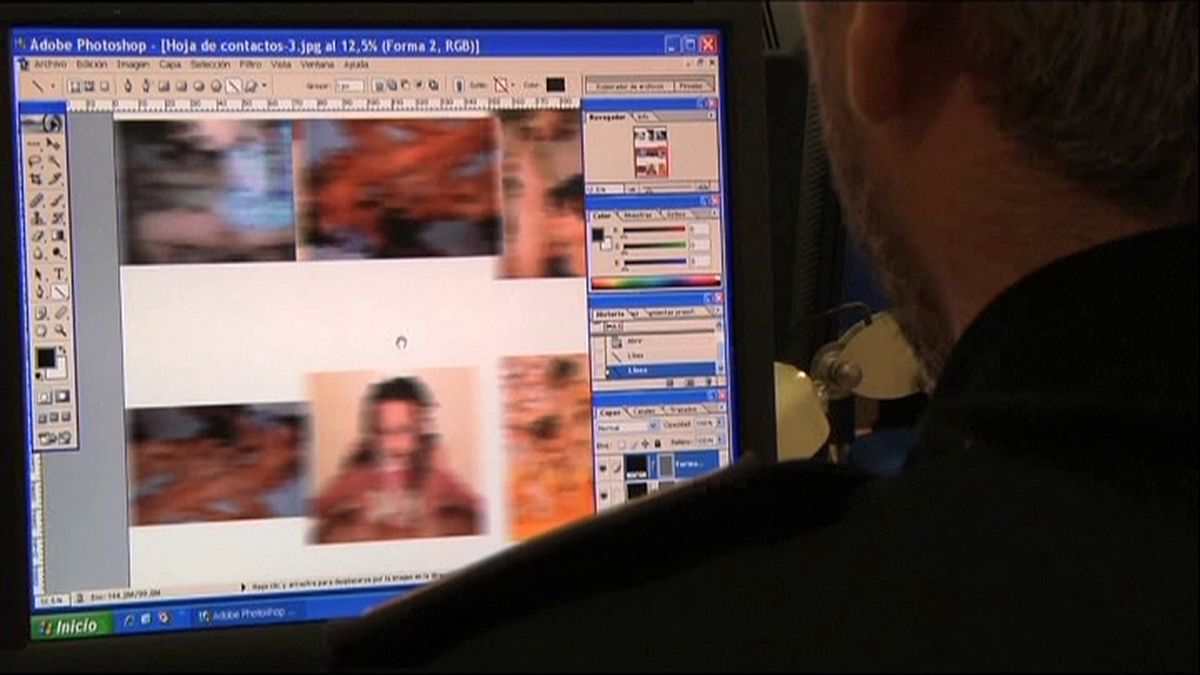Child sexual abuse is a global problem, which is why police around the world are working to identify and rescue the victims.
A single image can trigger a vast international investigation into child sexual abuse online.
That was what happened in 2012 when a US man sent a photo to an undercover agent in Boston, who then uploaded it to Interpol’s International Child Sexual Exploitation image database (ICSE). It was picked up by an investigator in the Netherlands who identified a stuffed toy in the image as Miffy, a rabbit given to many Dutch children. This in turn led to the prosecution of Robert Mikelsons to 18 years in prison for abusing dozens of babies and toddlers, some just a few months old, and helped identify more than 100 child victims.
Local police officers in 49 countries use the database to identify and rescue children in the images. These can be from photos or videos posted online or found on laptops seized during investigations. Using image analysis technology and old-fashioned detective work, they piece together clues to identify the victims.
The type of crime requires that victims are identified before the perpetrator can be found – it is referred to as the victim-centric model. Often only the victims are shown in images of abuse, and the majority of abusers are someone known to the child, be it a family member or someone in close contact (a neighbour or childcare professional for example). This means once the child is identified, they can be located, rescued and the perpetrator prosecuted.
Most child sexual abuse takes place behind closed doors. When the act is recorded the child is re-victimised, and even further damage can be done when that material is published or traded online. Due to the global nature of the problem, fighting against it requires an international effort.
Scale of the challenge to police
INTERPOL announced on Monday it had identified 10,000 child victims of sexual abuse via the database, but added it was just the tip of the iceberg. I spoke to Mick Moran, Head of Vulnerabilities about the challenges of policing online child sexual abuse who said that the number of unidentified victims stretches into the hundreds of thousands.
Privacy issues and private companies
With the constant evolution of the internet, it allows more methods of communication than ever before, but as Moran says that ‘any new service will be exploited’ by people interested in the sexual abuse of children. He called on companies to act responsibly and not hide behind privacy issues.
Some companies he said are very good at helping to battle the proliferation of child sexual abuse material or ‘child porn’ found online. INTERPOL has integrated Microsoft’s PhotoDNA technology into the ICSE database. The tool compiles a digital signature or ‘fingerprint’ which can be matched against other images, reducing the time it takes officers to check whether a child has already been identified or is currently at risk.
Other companies are apparently lagging behind paying simple lip-service to the issue. To these companies, Moran said they must know they have a responsibility towards a child who is being abused. He said often companies will scan for spam or malware, but were reticent to run a scan for child abuse material.
In certain cases, Moran laments the ‘rush to market of new services’.
“These people will abuse your service. So what are you going to do about it? Is there any possibility we can analyse your service just before you go online to see what measures you can take, within your service, within your platform – so that they cannot abuse your system to abuse children around the world,” Moran said adding, “We’re not talking about 18-year old girls in soft focus… The vast majority are pre-pubescent children, sometimes pre-speech (i.e. younger than 3 years-old).”
New technology and old ways
It has been well documented that child sex offenders from rich countries will travel to poorer countries in order to abuse children. Now new technology facilitates what police call ‘remote child sex abuse’ via live streaming. In some cases, a child sex offender will pay for a child to be abused using live streaming services. The problem for policing is that the visual evidence of abuse disappears when the connection does.
One case of such abuse in the Philippines, Moran described as one of the worst he had ever seen. It involved the abuse of large number of children, extreme violence and even the death of a child.
“If you can imagine the videos, listening to them, especially the soundtracks that go with those videos. The screaming of the children…It makes this particular job very hard to do,” he explained.
But he added, it’s the feeling of helplessness when you see the abuse that fuels his passion for the job.
“By working together, by working up every clue to its very end with a view to identifying these children and stopping the abuse and to making people pay for it, that’s what drives us on.”
How to report child abuse
In the UK contact the NSPCC if you want to discuss your concerns and get advice.
NSPCC (for adults)
Telephone: 0808 800 5000
Find out about call charges
ChildLine (for children and young people)
Telephone: 0800 1111 (free)
